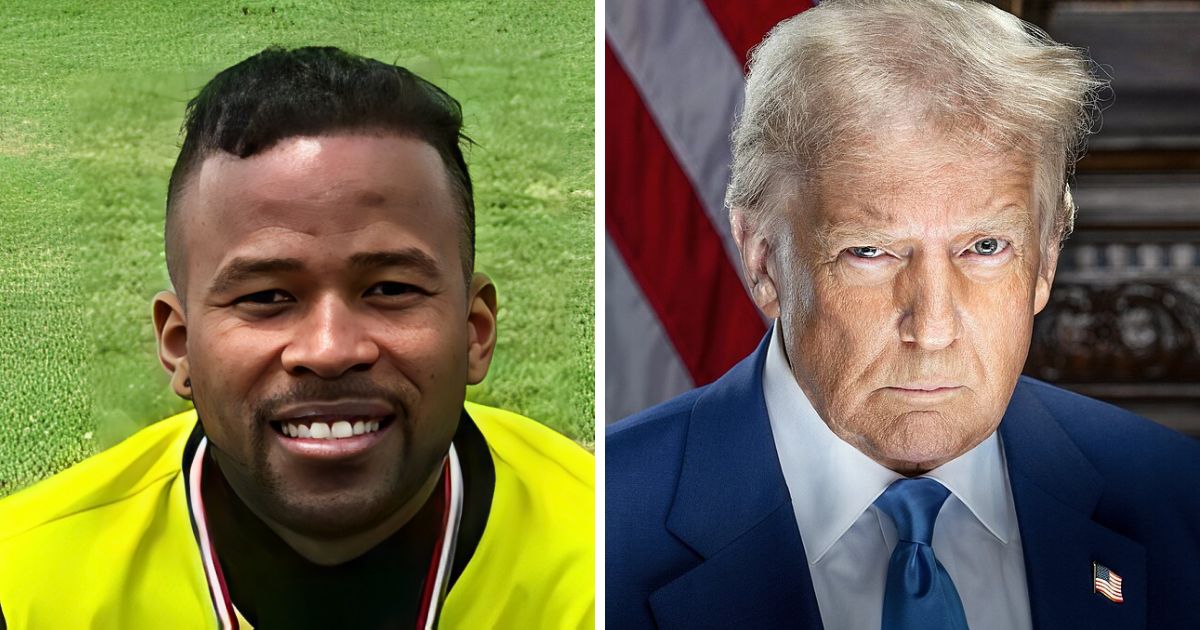When Venezuelan soccer player Jerce Reyes Barrios arrived in the U.S. in 2024, asking for asylum, he was dreaming of a better future for his daughters and his sick father. But instead of finding safety, he found himself locked up in CECOT, a place often described as one of the most terrifying prisons on the planet, all because of a tattoo and a hand gesture he made. His own words? “Hell on Earth.”
Reyes Barrios was one of 252 Venezuelans who got caught up in immigration custody during Donald Trump’s administration, only to be quietly sent over to CECOT in El Salvador. Why? He had a tattoo showing a crown and a soccer ball, which he insists was just a nod to Real Madrid, and he made a “rock-and-roll” hand sign that was wrongly seen as a gang signal. Even though he’d never been in trouble with the law, he was accused of being part of Venezuela’s Tren de Aragua gang, and they did it without any proof or even a proper trial.
Reyes Barrios spent months at CECOT, a prison facility in El Salvador that President Nayib Bukele often shows in the media.
Those months were filled with physical and mental suffering, according to Reyes, who spoke with HuffPost. He described beatings as a regular occurrence, saying things like, “If you didn’t eat, they would hit you. If you took a shower when it wasn’t time, they would beat you.” To get through each day, he relied on patience, finding strength in the story of the biblical figure Job.
Reyes Barrios’s story is a prime example of a broad and highly debated immigration policy put back into action by the Trump administration, specifically its renewed use of the Alien Enemies Act, which has not been used since World War II. Even after a federal judge ordered these deportations to stop, the government secretly sent detainees like Reyes back to El Salvador, ignoring legal procedures.
This made immigration rights groups and the judicial system angry.
Reyes Barrios remembered when the truth hit him, his voice catching: “I started to cry (…) My mind went blank.” When they first arrived, the detainees were forced to shave their heads, stripped of their clothes, and made to walk hunched over.
A prison official delivered a grim welcome: “Welcome to (…) where you’ll be condemned to spend the rest of your lives.”
Life inside the prison felt like something out of a nightmare. They were packed into giant cells with dozens of other men, forced to live under cages while guards walked above them. The only clue that told them whether it was day or night was the schedule for their meals. Showering at the wrong time meant being locked alone in a tiny 2×1 meter cell, nicknamed “the Island.”
pro soccer player Jerce Reyes Barrios followed all the rules when he came to the US. His lawyer told took his asylum case bc it seemed like a “slam dunk. Then US officials sent him to CECOT, where he was told he’d spend the rest of his life
w/@mattshuham https://t.co/cgNyj5TFrs
— Jessica Schulberg (@jessicaschulb) August 2, 2025
Barrios spoke of the beatings he endured with batons, fists, and boots, even while his hands were cuffed behind his back. Sometimes they were denied clothes, and any medical help was practically nonexistent.
So, what could they read? Only the Bible was permitted. Could they talk to anyone from the outside world? Practically not at all. They received visits from the Red Cross just twice during their four months locked up.
Then, on July 18th, after 125 days held at CECOT, Reyes Barrios and the other detainees were finally let out. They were part of a swap and sent back to Venezuela. Many had to return to the country they had fled before, but with nothing left to their name. But Reyes received a heartfelt welcome in Machiques de Perijá; his hometown had come together to greet him upon his return.
This is a beautiful photo of Jerce Reyes Barrios upon reuniting with the soccer team in Venezuela he used to coach. He left to come to the US to fund his father’s glaucoma meds. He was arrested, falsely accused of gang membership, sent to CECOT, and tortured for months. pic.twitter.com/MZ2M8aJHE2
— 🎵 2 kool 2 b 4-gotten 🎵 (@oddfellows151) August 2, 2025
The legal fight isn’t finished yet, though. Linette Tobin, an immigration lawyer who had been fighting hard for Reyes’s asylum claim before he vanished from U.S. custody, convinced a judge to keep his case open. Groups like the ACLU are now working hard to ensure people like Reyes get the chance to come back and properly present their asylum cases.
Department of Homeland Security (DHS) officials are still defending their actions. DHS Assistant Secretary Tricia McLaughlin issued a statement reiterating claims about gang activity without offering any proof, saying: “Tren de Aragua and MS-13 are some of the most violent and ruthless terrorist gangs on planet earth.”
Meanwhile, survivors like Reyes Barrios are finding it tough to recover.
“I just want to enjoy being around my daughters, watching them grow,” he shared. He struggles with sleep, and trauma remains. But this hasn’t changed his passion for soccer. He said, smiling, “I’ll always be a fan of Real Madrid.”













